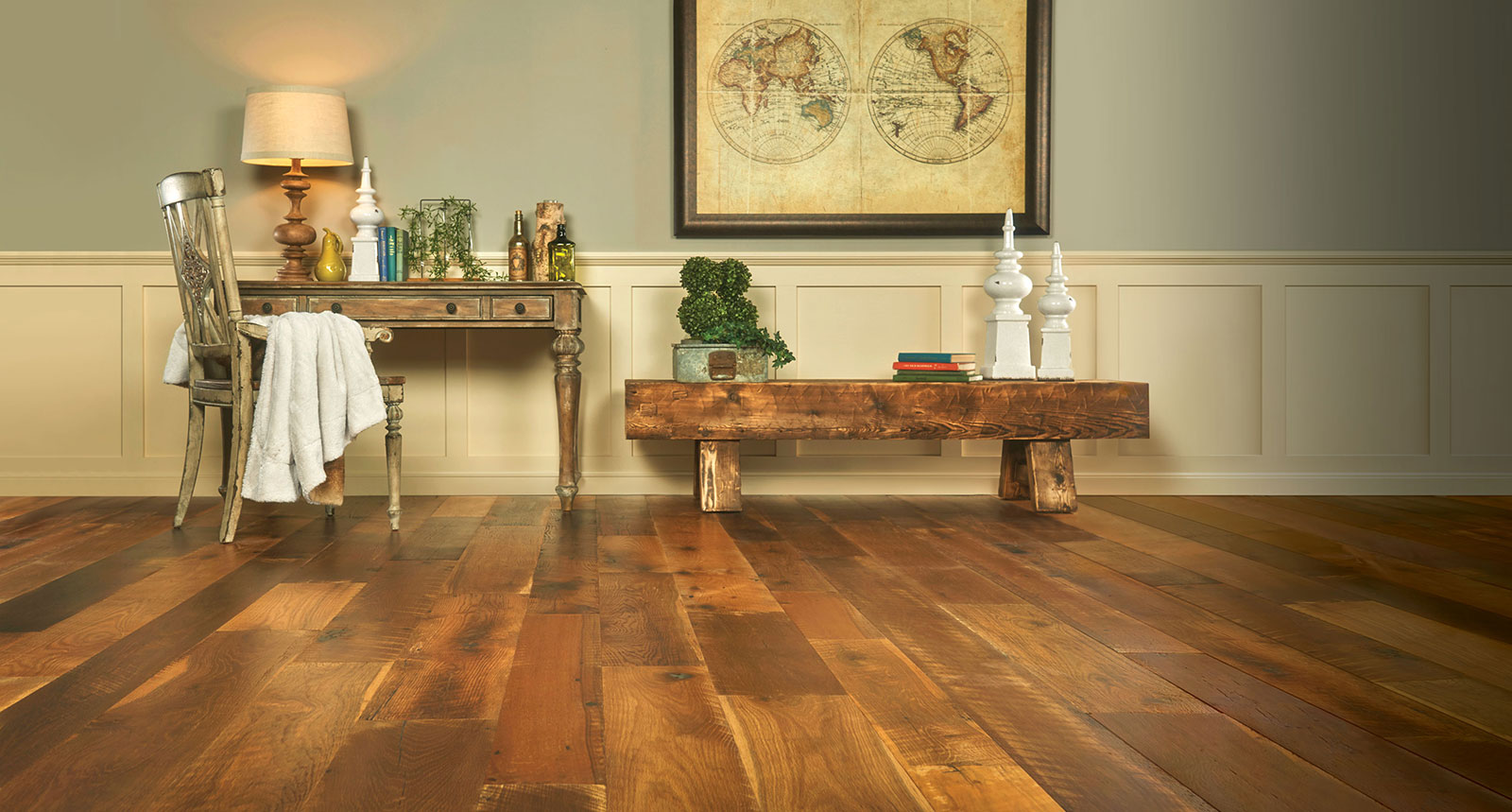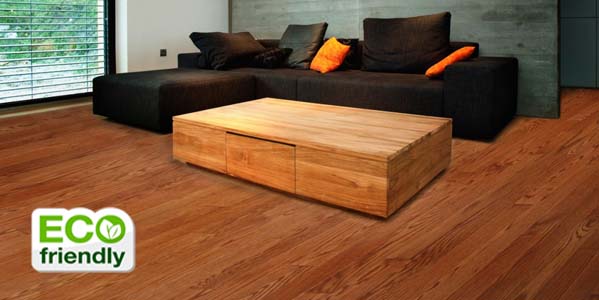Here is a basic rundown of some ways in which wide plank hardwood floors can be sustainable and eco-friendly.
SOLID HARDWOOD FLOORS
Compared to carpet — a popular flooring option — hardwood floors have many benefits. The wood used in hardwood floors can be recycled and used in other applications. Even if the hardwood ends up in a landfill, it is a natural product that will decompose over time. This is not true for carpets. During the milling and manufacturing of hardwood floors, every bit of wood is used or re-purposed for other products. The bark of the log can be turned into pulp for paper. Sawdust is collected and burned to power the mills. Extra bits of wood are sent off to different manufacturers for use in furniture and other applications.
There are also benefits to the homeowner for choosing hardwood floors over carpeted ones. Carpets can harbor allergens and other dust particles, while hardwood floors are considered to be hypo-allergenic. This means they are a great solution for people who have indoor allergies.
BAMBOO FLOORING
One of the first types of wood that comes to mind when people think of green and hardwood floors is bamboo. The funny thing is that bamboo is actually a type of grass! Bamboo is often considered to be a sustainable wood because of how quickly it regenerates after being cut down. A typical turnaround for bamboo after being harvested is four to six years. While American hardwoods are renewable, the harvest cycle is just a little longer.
However, there are two areas to consider when purchasing Bamboo.
One is that in the construction of the bamboo planks, some manufacturers use formaldehyde in their glue. Bamboo planks can be made in several ways. In “solid” construction, squares of bamboo are glued together to make a plank. “Engineered” bamboo is like other engineered floors. The top layer is bamboo. The core of the plank is another type of wood. Lastly, “strand woven bamboo” is comprised of strands of bamboo that are soaked in glue and compressed together.
For all these methods, glue is an important factor. Make sure that the manufacturer of the bamboo planks you are buying does not use formaldehyde in their products.
The second area to consider when buying bamboo is that it takes a lot of energy to ship the bamboo from China to the United States. Some people in the industry feel that the carbon footprint from shipping the product completely offsets any benefits to using bamboo. Manufacturers of flooring in China do not have to adhere to the same standards as most U.S. or European based facilities.
RECLAIMED WOOD

Another popular type of wood that is considered “green” is reclaimed wood. Reclaimed wood usually refers to wood that comes from logs found in rivers or wood that was previously part of another structure like a barn or a mill.
When wood is reclaimed to be used for hardwood flooring it is first carefully inspected for structural integrity. Once approved, the wood is re-milled to be made into planks.
Using reclaimed wood is a green practice because it prevents any new trees from being cut down. Not only that, but because each piece of reclaimed wood is unique, your customers can have a fun back story to their floor. Perhaps you’ll install a floor made out of an old barn into someone’s home.
ENGINEERED/ENVIRONEERED FLOORING
Engineered flooring is seen as environmentally friendly because of its construction. Engineered flooring is created by putting a layer of hardwood floor over several layers of plywood that have been glued together. Unlike solid wood flooring, the engineered product uses a fraction of the amount of wood to construct the flooring. Using wood in this manner reduces the overall amount of trees needed to be cut down to manufacture hardwood floors.
CERTIFIED FLOORING
There are many organizations out today that exist to ensure wood has been properly harvested to be used for hardwood floors. These organizations can offer you or your customers peace of mind when purchasing wood. One service these organizations provide is chain of custody documents. These documents must detail every step a piece of wood takes on its journey from forest to distribution warehouse. Along each step, every person or company in possession of FSC-designated wood must be FSC certified. Certain organizations in charge of the trees are even starting to embed RFID chips into the trees so they can be sure the logs have come from certified forests.
The most well-known organization is the Forest Stewardship Council. The FSC sets standards for how trees can be logged in sustainable forests. While many manufacturers strive to obtain FSC certification, there are other organizations that award companies with certificates commending their sustainable business practices. A few of these organizations include: Sustainable Forestry Initiative (SFI) which is run by the American Forest and Paper Association and the Canadian Standards Association (CSA) International which is based out of Canada.
Additionally, the National Wood Flooring Association (NWFA) offers a certification program called the Responsible Procurement Program which is given to companies who manufacture and sell hardwood floors. This certification is often considered to be a stepping stone to being fully FSC certified.
SUSTAINABLE FORESTS
The stereotypical depiction of a forest being bulldozed for lumber isn’t exactly true anymore.
A good majority of forests these days are carefully managed. Those in charge of the forest will select only a handful of trees per square foot to be cut down. The other trees are left alone. Once a tree is cut down, a seed is planted so another tree can take its place. This process of logging is so unobtrusive that it’s sometimes hard to tell whether you’re in a forest intended for logging or a state preserve!
While clear cutting forests is still a problem, those who perpetuate it are more often associated with land development than those who work in industries who use wood to make products.
